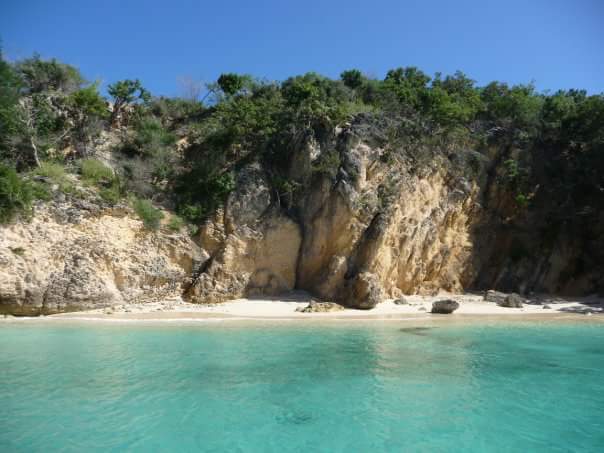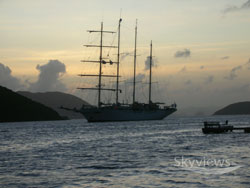Anguilla Top Do's
View our 30th Edition Road Map & Guide to Anguilla 2025
About Anguilla

Situated at 63° 10’W, 18° 15’ N, directly north of St. Martin, this little island takes its name from the Spanish word anguila, meaning eel, because of its similar shape. It was formerly known as Snake Island. At 35 mi², or 91 km², it is long and very flat, with a high point of 200 ft (61 m) at Crocus Hill. Vegetation is sparse due to the low rainfall. Anguilla has over 30 excellent white sand beaches, spectacular and ecologically significant coral reefs, as also a well-earned reputation as a quiet and peaceful getaway. There are many surrounding uninhabited islands: Anguillita, Dog Island, Prickly Pear Cays, Sandy Island, Scrub Island, Scilly Cay, Seal Island and Sombrero (also known as Hat Island).
Fun things to do: diving, snorkelling, cruising, fishing and also visit places of historical interest. A nice selection of up-market art galleries might entice you, visually, as well as those of you who like to take home something precious!
Skyviews Anguilla Gourmet Guide
Local businesses
Going to Anguilla and wondering where to stay, what to do, where to eat and how to get around? We’ve got you covered with our list of hotels, restaurants, activities, car hire, shopping & more. Browse through for more details.
Accommodation
Choose from hotels, real estate, villas & cottages
Cottages & Small Inns
Hotels & Resorts
- Anguilla Great House Beach Resort
- Aurora Anguilla Resort & Golf Club
- Cap Juluca A Belmond Hotel
- Carimar Beach Club
- CeBlue Villas
- Fountain Anguilla
- Four Seasons Resort and Residences Anguilla
- Frangipani Beach Resort
- LaVue
- Malliouhana
- Quintessence Hotel
- Shoal Bay Villas
- The Manoah Boutique Hotel
- Tranquility Beach Resort
- Turtle's Nest Beach Resort
- Zemi Beach House
Real Estate & Land Sales
Real Estate & Villa Rentals
Experiences
Try watersports, golf, scuba diving, tours & more
Day Sails & Charters
Entertainment
Sightseeing & Tours
Water Activities
Restaurants
Lime at the bars, dine in the restaurants, take in the entertainment
Bar & Grill
Bar & Lounge
Beach Front
- Arawak's Taverna
- Coral Beach Bar
- Da'Vida Beach Club
- Johnno's on the Beach
- Leon's @ Meads Bay
- Madeariman Beach Bar & Restaurant
- Ocean Beach Club
- Ocean Echo Restaurant
- Roy's Bayside Grill
- SandBar
- Sandy Island
- Savi Beach Club
- The Ferryboat Inn & Restaurant
- The Fish Trap
- Tropical Sunset Restaurant & Bar
Beach Front & Grill
Café & Bakery
Fresh Juices
Restaurants
Restaurants & Fine Dining
Restaurants & Grill
Roadside
Services
Get information on the island, medical facilities & other services
Community
Health & Wellness
Shopping
Shop for souvenirs, local crafts, art, jewellery, clothes & more
Art Galleries
Groceries
Market
Retail
- Anguilla Electronics
- Anguilla Sands and Salts
- Anguilla Sunshine Shop
- AXA Teez & Caribbean Silk Screen
- Bath House
- Beach Happy
- Fabiana's Why Knot wear
- Irie Life - T-Shirts - Beachwear - Colorful Clothing at Island Harbour
- Irie Life - T-Shirts - Beachwear - Colorful Clothing at South Hill
- Sea Spray Gifts to Go Iced n' Easy Smoothies
- Tackle Box Sports Centre
Wines & Liquor
Transport
Hire a car, jeep, bicycle or scooter to travel around the island
Ferries
Events
Annual events
- Jan
- Feb
- Mar
- Apr
- May
- Jun
- Jul
- Aug
- Sep
- Oct
- Nov
- Dec
Events in January
New Year's Day
Public Holiday
https://publicholidays.la/anguilla/new-years-day/Events in March
James Ronald Webster Day
Tribute Day
https://publicholidays.la/anguilla/james-ronald-webster-day/Events in April
Good Friday
Public Holiday A day of church services for all denominations throughout the island
https://publicholidays.la/anguilla/easter/Events in May
Labour Day
Public Holiday Fun Sports Day amongst Government Departments and Private sector companies.
https://publicholidays.la/anguilla/labour-day/Anguilla Day
Public Holiday The most significant holiday on the Anguillian calendar of events, and culmination of the month-long celebrations to commemorate Anguilla Day. Featuring A-Class Boats starts and ends in Sandy Ground
https://publicholidays.la/anguilla/anguilla-day/Events in June
King's Birthday
Public Holiday All uniformed organizations parade at James Ronald Webster Park in the morning and cocktails are served in the evening at Government House to invited guests. A Class Boatrace at Crocus Bay
https://publicholidays.la/anguilla/kings-birthday/Events in August
August Monday
Public Holiday
https://publicholidays.la/anguilla/anguilla-carnival/August Thursday
Public Holiday A day for picnics and family reunions and the ATB-sponsored A & B class Boatraces at Meads Bay.
https://publicholidays.la/anguilla/anguilla-carnival/Constitution Day
Public Holiday Troupes from villages all over the island come together on the last Friday of Summer Festival to parade through the streets of the Valley. Colourful costumes depicting cultural and fantasy themes and the winner of Road March is announced. (1:00–9:00pm)
https://publicholidays.la/anguilla/constitution-day/Events in December
National Heroes and Heroines Day
Public Holiday in the honour of our past and present heroes and heroines of the 1967 Anguilla revolution.
https://publicholidays.la/anguilla/national-heroes-and-heroines-day/Boxing Day
Public Holiday
History and Culture

Anguilla was first settled by the Amerindians and the earliest artefacts found date back to around 1300BC. Remains of settlements date from 600 AD. It seems that the island may have been called Malliohana, meaning arrowhead, by the Arawaks. Who came next? Some say that Columbus sighted the island in 1493 on his second voyage to the West Indies, and others say it was ‘discovered’ in 1564 by the French explorer René Goulaine de Laudonnière (put in accents). However that may be, it is known that English settlers from the island of St. Christopher colonised the island from the 1560’s. More recent investigation indicates that the island may also have been a refuge for Creoles from St. Kitts, as well as Barbados, Nevis and Antigua. Slavery is thought to have been existent by 1683. Today the majority of residents are black (90.08%), and growing minorities include whites (3.74%) and people of mixed race a (4.65%) (2001 census). True Anguillans form 72% of the population.
As in most of the islands, ‘standard English’ has evolved into a local ‘dialek’ (dialect), or Anguillan or Anguilla Talk.
Anguilla has a growing music scene and has produced the first-ever album with only artists from a single Caribbean island, playing multiple musical genres. Anguilla has earned a fine reputation as the culinary capital of the Caribbean.
How many times has it changed hands?
Anguilla has had various administrations. In colonial times, the British, through Antigua. In 1825, it went under the control of St. Christopher (Kitts) and Nevis. When the British gave St. Kitts and Nevis full internal autonomy in 1967, Anguilla was also incorporated. The Anguillans were not having any of this though and in 1967 and 1969, Ronald Webster led two revolutions to bring the status of the island back to being a colony. British authority was fully restored in July 1971 and in 1980 Anguilla was finally allowed to secede from Saint Kitts and Nevis and become a separate British Crown colony, now a British overseas territory. It has its own multi-party system. Anguilla is a popular tax haven, there being no direct taxes, capital gains tax, etc. It was only in April of 2011 that a 3% Interim Stabilisation Levy was introduced to bridge a mounting deficit.